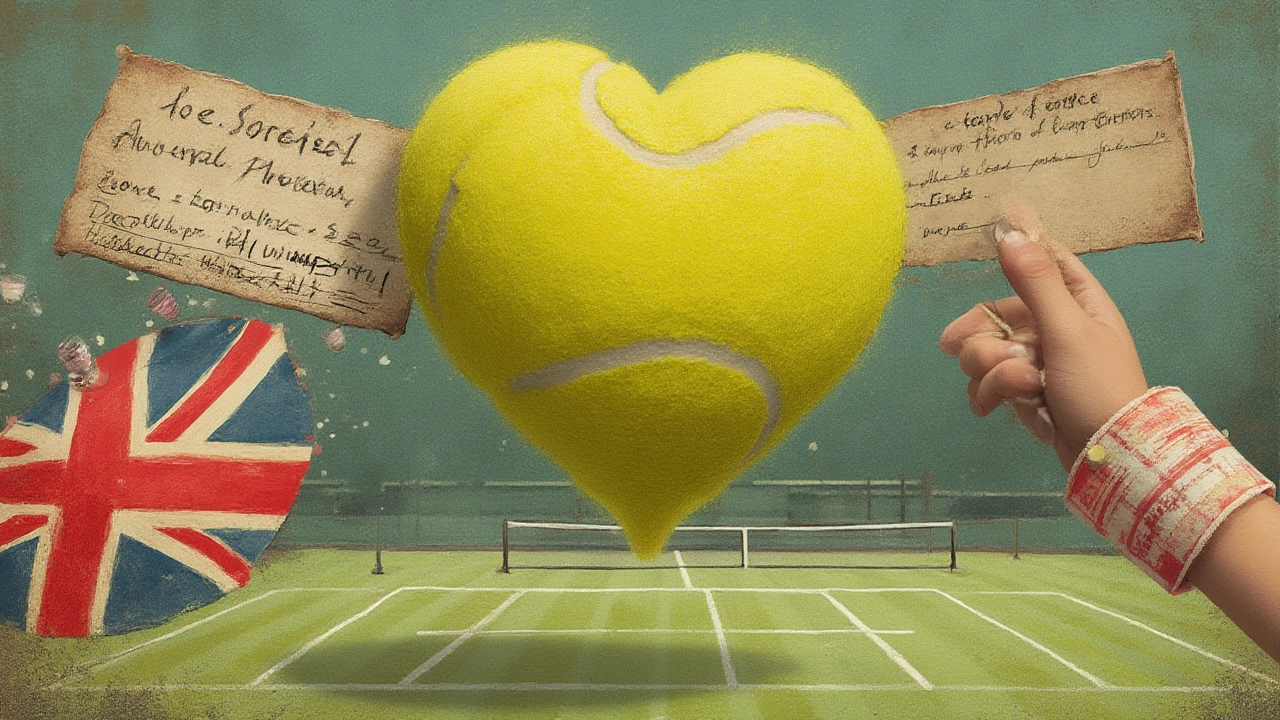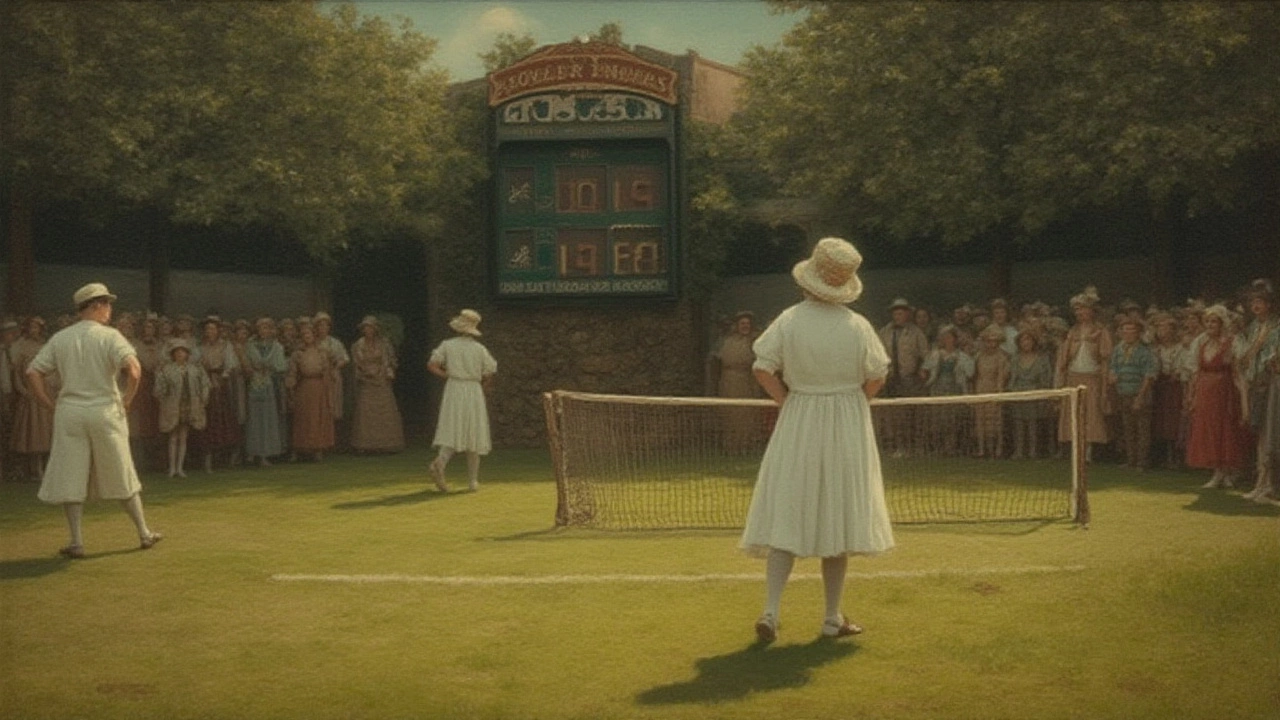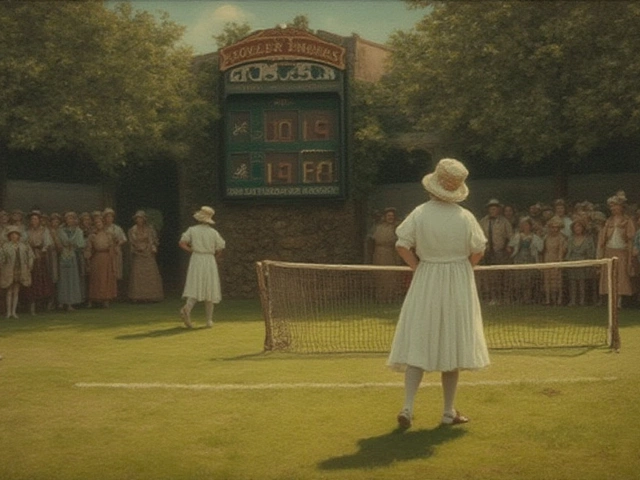Picture this: Wimbledon’s Centre Court, the stands buzzing on a summer afternoon, players locked in a tense rally. The umpire calls out a score, “Fifteen–love!” If you’re new to tennis, that word ‘love’ sounds completely out of place. Isn’t sport about winning? So why would anyone use ‘love’ for a score of zero? The answer, like most things in this centuries-old sport, isn’t as simple as you might expect. The tradition is quirky, the history is fuzzy, and yes—there’s a dash of old-fashioned romance in there too.
Theories Behind ‘Love’ in Tennis Scoring
The most popular theory traces ‘love’ to the French word “l’oeuf,” which means “egg.” In French, “l’oeuf” is pronounced almost like ‘love,’ and an egg, with its round shape, looks a lot like a zero. French players in the 19th century supposedly used “l’oeuf” to mean zero on the scoreboard, and the pronunciation morphed into ‘love’ when English speakers took it over. It’s a neat story and easy to picture: A polite British crowd adopting and slightly mishearing a French sporting term, then spreading it through tennis clubs from London to Melbourne.
But the egg theory isn’t the only explanation. Some experts argue that ‘love’ shows a spirit of playing for nothing—for the love of the game, instead of for money or trophies. This idea fits with Victorian values, when tennis was booming among upper classes and amateur sportsmanship was prized. If a player scored zero, they were “playing for love,” meaning just for the fun of it. The Oxford English Dictionary points out examples from early 20th-century English, where ‘playing for love’ meant playing without stakes.
A third, less likely story claims ‘love’ is just a corruption of the English word ‘zero’ or even ‘leave,’ as in you’re left with nothing. But most historians find this one weak, with little evidence in old documents or rulebooks. Still, it goes to show the chaos and color in how tennis scoring picked up terms over time.
What’s wild is how none of these stories has been confirmed with solid proof. No dusty rulebook spells out exactly when or why zero became ‘love.’ Instead, the term kept showing up in tennis clubs, event programs, and newspaper writeups until it became part of the sport’s official language. Today, you’ll hear “love” in official matches, local leagues, and even on digital scoreboards—all because someone, somewhere, thought an egg was a good symbol for nothing.
The Impact of Quirky Tennis Terms on the Game
Tennis scoring isn’t just odd for ‘love.’ The game also uses “fifteen,” “thirty,” and “forty” instead of the more straightforward “one, two, three.” That alone leaves newbies scratching their heads, especially when combined with terms like “deuce” or “advantage.” The use of ‘love’ at zero sets tennis apart, giving matches a charm and mystique that’s hard to find in, say, soccer or basketball, which simply count goals or points in plain numbers.
This unique language also shapes how players think about the game. Zero isn’t just an absence of points; it comes loaded with meaning. “Love” sounds a lot nicer than “nil” or “zero.” It softens the blow of falling behind in a match, especially in front of a crowd. Legendary player Martina Navratilova once joked that hearing ‘love’ on the scoreboard helped take the edge off losing a game early on. For younger players, the quirky lingo turns a boring zero into something almost magical, like a doorway to tennis tradition.
TV commentators and tennis writers embrace ‘love’ for its color and tradition. Instead of saying “the score is three-zero,” it’s “forty–love,” and the stadium has a familiar, cozy feeling. Some purists believe these oddities are part of what protects tennis culture from the ultra-rational, stat-driven approach you might find in other sports. The scoring lingo signals exclusivity—a kind of secret handshake for anyone who truly knows tennis.
On the flip side, these old-fashioned terms can create confusion. New fans sometimes get lost, misreading scores or struggling to follow what’s going on. Tennis coaches often devote an entire chunk of beginner lessons just to explaining the format—love, fifteen, thirty, forty, deuce, advantage—before anyone even swings a racquet. But for those who stick around, mastering the lingo becomes a rite of passage. You earn your tennis stripes once you know a “bagel” means losing a set 6–0 and that “love” means you’re starting from scratch.

How Tennis Scoring Has Evolved
Believe it or not, tennis had wildly different ways of keeping score long before the words ‘love’ or ‘fifteen’ appeared. Historians trace the earliest rules of tennis back to 12th-century France and later England, where the game began as a handball pastime among monks. Early games might have awarded points in increments of one, but the modern structure took shape as tennis spread to the English manor houses, where players started marking scores with clock faces.
You’ve probably wondered why tennis goes “fifteen, thirty, forty” instead of counting by tens. Some researchers think players once moved a hand on a clock from 0, to 15, to 30, to 45 as scores increased, but then rounded down “forty-five” to “forty” to speed up announcements. By the 1700s, that pattern was firmly in place in clubs around London and Paris. Now, add ‘love’ as the official zero, and you get the scoring system we know today.
Official tennis bodies, like the International Tennis Federation (ITF), have never actually considered changing the language of scoring. In fact, it’s become a badge of identity for tournaments worldwide. When new fans tune in to Wimbledon or the US Open, hearing “love” instead of “zero” immediately signals that this is tennis, not some generic sport. Kids’ matches, local leagues, and even wheelchair tennis use the same terms, giving everyone from beginners to pros a shared language.
Let’s put the spread of ‘love’ into perspective with a quick table of where and when the term appears in tennis documentation:
| First Known Use | Country | Context |
|---|---|---|
| Late 1800s | England | Clubhouse scoreboards, written as ‘love’ |
| 1902 | USA | Newspaper articles |
| 1920s | France | Official rulebooks, borrowed from English |
| Today | Worldwide | Used in all levels of official matches |
The tradition isn’t limited to English-speaking countries, either. In Spain, players still say “cero,” but at clubs aiming for international flair, ‘love’ reigns. The term’s popularity is so strong that it occasionally pops up outside tennis—a 6–0 soccer defeat is sometimes called a “tennis score.”
Other sports have flirted with quirky scoring, but tennis stands alone in its stubborn refusal to modernize the math. The use of ‘love’ for zero is a prime example of how history, language, and cultural quirks stick around long after their origin stories fade. No matter where you play, from a grand slam to your local park, shouting “love–all!” to start a match feels like joining a centuries-old club.
Tips for Understanding and Using Tennis Scoring Terms
Wrapping your head around tennis’s unique language pays off, especially if you’re new to watching or playing the sport. Here are a few quick tips to get you fluent and ready to follow matches like a pro:
- Remember that tennis scoring always starts at ‘love-all’—meaning both players have zero. After the server wins a point, the announcer calls the server’s score first (“fifteen–love” means server 15, opponent 0).
- At zero, it’s always “love.” So, if a game is tied at 30–0, the correct call is “thirty–love.” If the server loses every point, it’s “love–forty.”
- Curious about that ‘bagel’ term? If a set is lost 6–0, it’s called a ‘bagel’ in tennis slang (because the zero looks like a bagel or egg). A full double-bagel, or 6–0, 6–0, is rare—even legends like Federer have only pulled it off a few times.
- Don’t sweat if you mix up the calls at first. Even experienced players and seasoned commentators flub the order sometimes. When in doubt, remember: Server’s score comes first.
- Pay attention to international matches—hearing “love” called out in French, Spanish, or Italian is part of the global appeal of tennis. The word stays the same almost everywhere, and it’s a neat way to impress friends if you can say it with a proper accent.
- If you’re just learning tennis, make it a game to call out the scores yourself, even when practicing. It trains your memory and gets you comfortable with the flow of a real match.
A recent survey by the Tennis Industry Association in the US showed most new players say mastering the lingo, including ‘love,’ helped them feel more confident and connected on the court. And honestly, isn’t that what any good sport is supposed to do?
Next time you hear “love–all,” remember there’s history, a pinch of mystery, and timeless charm packed into those three little letters. Whether you see it as an egg, a spirit of sportsmanship, or just a lovable quirk, ‘love’ is tennis at its most human.






